When you’re planning a trip to Montana, you’re probably envisioning rugged mountain ranges, sprawling prairies, and perhaps even a cozy log cabin. But have you ever wondered just how cold it gets in the Treasure State during the winter season?
Montana’s winters can be intense, to say the least. So much so that lakes and streams freeze over and rivers carry floating ice. So, just how cold does it get in Montana, and why?
In this article, I’ll take you on a journey through Montana’s freezing winters, shedding light on everything from average temperatures to the chilliest months. We’ll delve into the geographical and topographical factors that contribute to the bone-chilling cold, as well as the role of wind and prairie lands.
As we explore the science behind the state’s frigid winters, we’ll also discover how Montana’s diverse wildlife has uniquely adapted to these colder temperatures. Survival of the fittest at its finest, indeed.
- Related article: Montana Cold Season
Montana’s winters offer a captivating tale of nature’s resilience and the state’s unique climate. So, let’s bundle up and embark on a journey to uncover the secrets of Big Sky Country’s winter wonderland.
7 Key Takeaways on How Cold Does It Get in Montana
- Montana’s winters are some of the coldest in the lower 48 states, with an average temperature of 42.6°F (5.9°C).
- The state’s location, continental climate, and Arctic air masses all contribute to its extreme cold.
- Montana ranks 6th in the US for coldest states, with temperatures often dropping to -50°F (-45.6°C) or lower.
- January is the coldest month in Montana.
- Mountain regions like Billings are even colder than western areas like Missoula and Kalispell.
- Wind is a major factor, with Montana being the fifth windiest state in the US.
- Montana’s wildlife not only survives but thrives in the winter, with species like bighorn sheep and moose adapted to the cold weather.
Winters in Montana
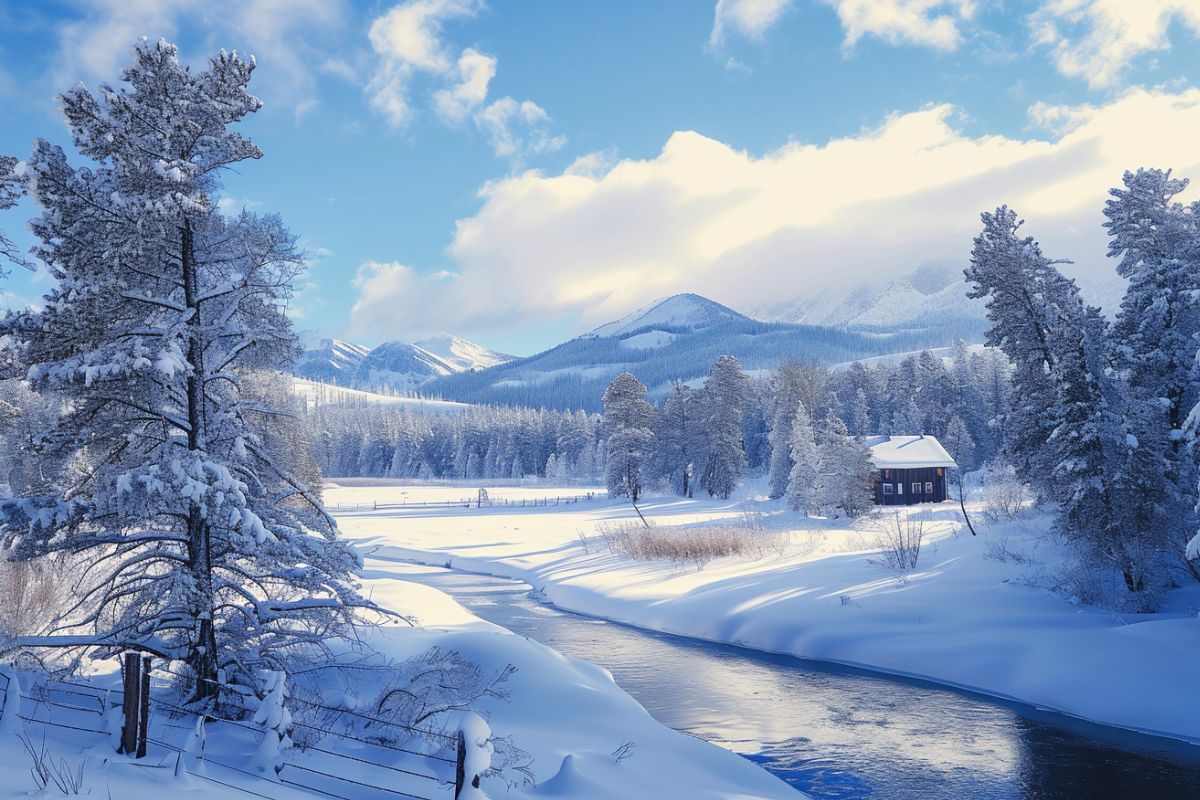
Think you know cold? Montana’s winters will give you a run for your money.
In this vast, mountainous state, the mercury drops to some of the coldest temperatures in the lower 48. So, let’s find out just how cold it can get and why.
Montana’s Freezing Winters
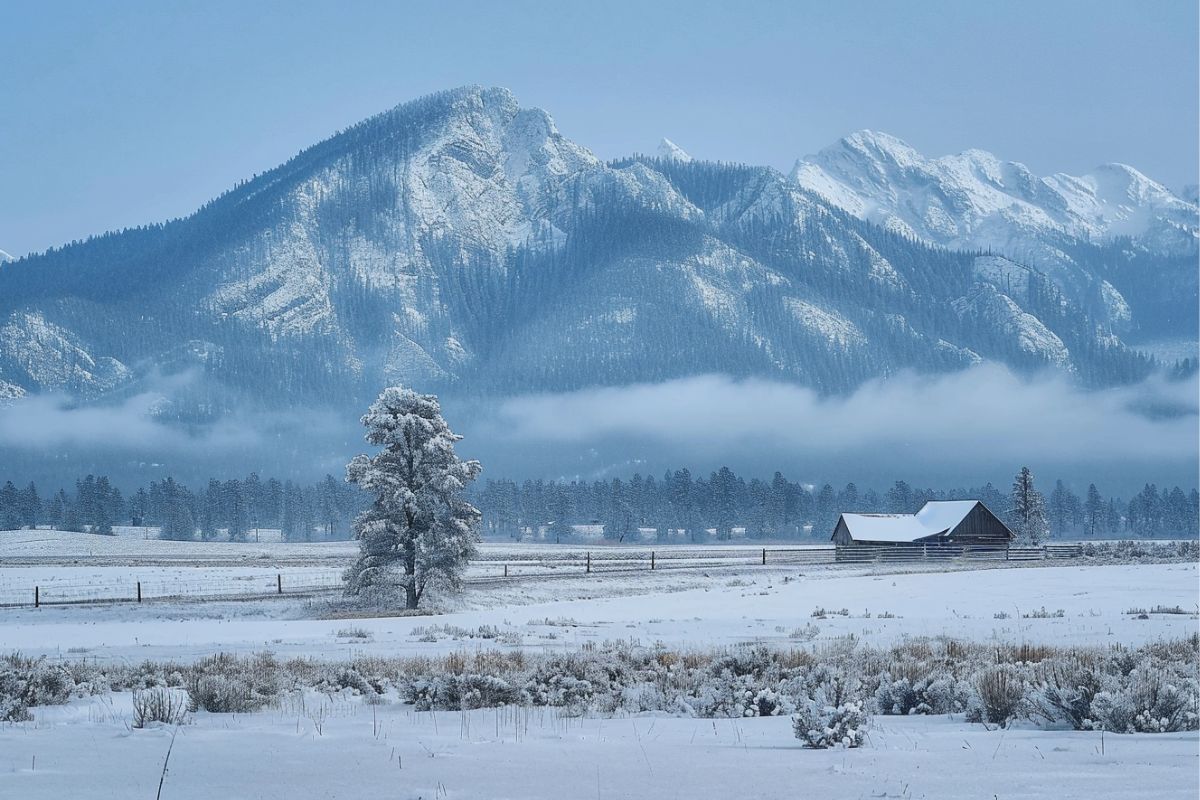
When it comes to winter, Montana doesn’t mess around. The state’s reputation for bone-chilling temperatures and epic snowfalls is well-earned.
Let’s break down the numbers about how frigid Montana is:
- Montana ranks 6th in the United States for coldest states, with an average temperature of 42.6°F (5.9°C).
- From early November to March, you can expect temperatures ranging from -10°F to -50°F (-23°C to -45.6°C) or even colder.
- January, the coldest month, sees averages as low as 11°F (-11.7°C) for the Northeastern Division to 22°F (-5.6°C) for the South Central Division.
But it’s not just about the numbers; it’s about the experience. I’ve been in Montana during late winter when lakes and streams turn into icy playgrounds. You’ll even see rivers carrying chunks of floating ice.
When visiting these places in Montana during winter, here’s what you need to know:
- Mountain regions like Billings are often even colder than western areas like Missoula and Kalispell.
- Cooke City, on the southern edge of the Beartooth Mountain Range, boasts Montana’s coldest year-round temperature.
- Yellowstone National Park and other areas like Mystic Lake and West Glacier record some of the highest snowpack averages.
- Cold waves hit parts of Montana 6 to 12 times each winter, mostly to the sections northeast of Glacier Park — Miles City line.
While you may not be able to change the frigid weather, you can certainly dress for it. So, dress in warm layers, the cold here isn’t just a nip; it’s a full-on embrace.
Reasons It Gets Cold in Montana
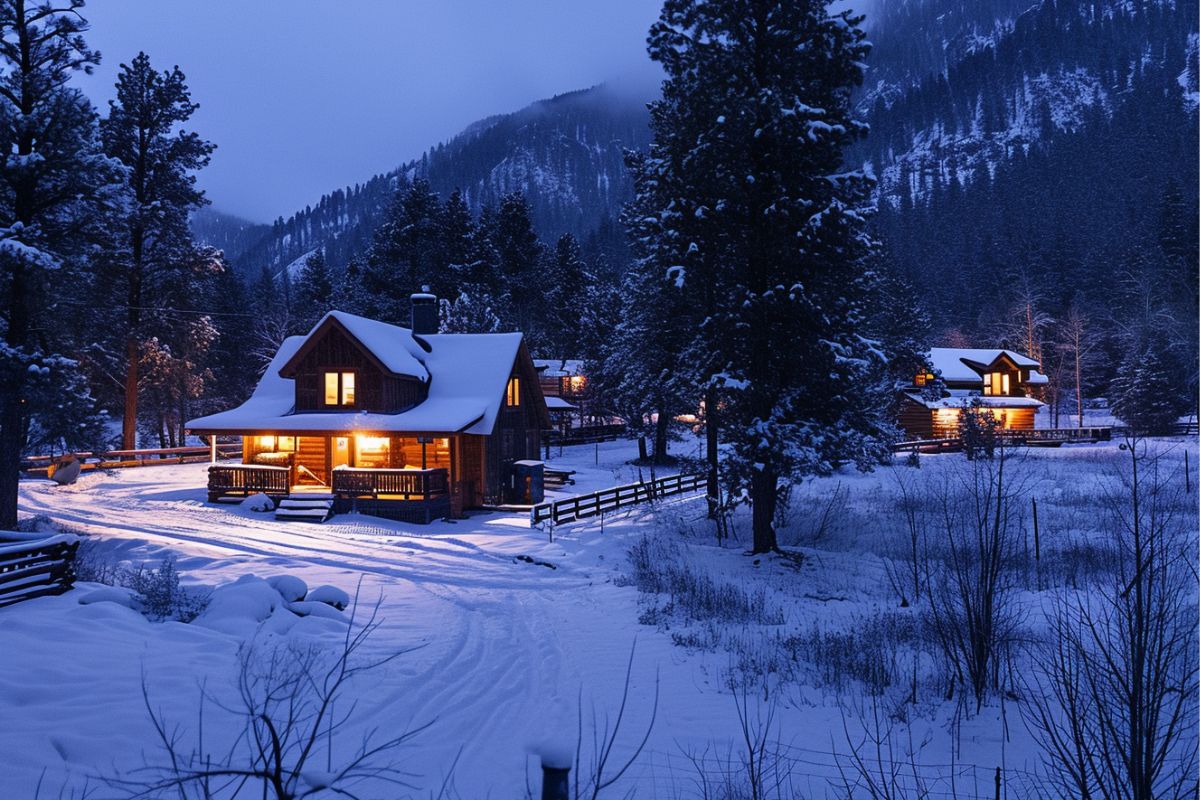
The winter chill in Big Sky Country is not a random occurrence; it’s a combination of geographic and topographic elements that come together to create a frigid masterpiece.
The main reason why Montana’s night temperatures can sometimes feel like a scene out of “Frozen” is because of the Continental Divide and the trapping of cold air.
The state’s valleys and mountains act as natural cold air traps, holding the chill in certain areas for extended periods. This trapping effect can lead to prolonged cold snaps that make even the hardiest Montanans reach for an extra layer.
While mountain passes like Logan Pass, Marias Pass, and Rogers Pass often act as sturdy gatekeepers, occasionally, energetic Arctic cold fronts can force their way through. When this happens, even regions shielded by the mountains can experience a sudden drop in temperatures.
And let’s not forget that the wind plays a major part in Montana’s cold reputation. Being the fifth windiest state in the U.S. with an average wind speed of over 20 mph (32 kph), these gusts can make already cold temperatures feel downright brutal.
Understanding these geographical and topographical factors can help you better prepare for Montana’s harsh winters. So, before you venture out, be sure to check the forecast for wind chill. It’s like regular chill but with an extra icy punch.
Montana’s Wildlife During Winter
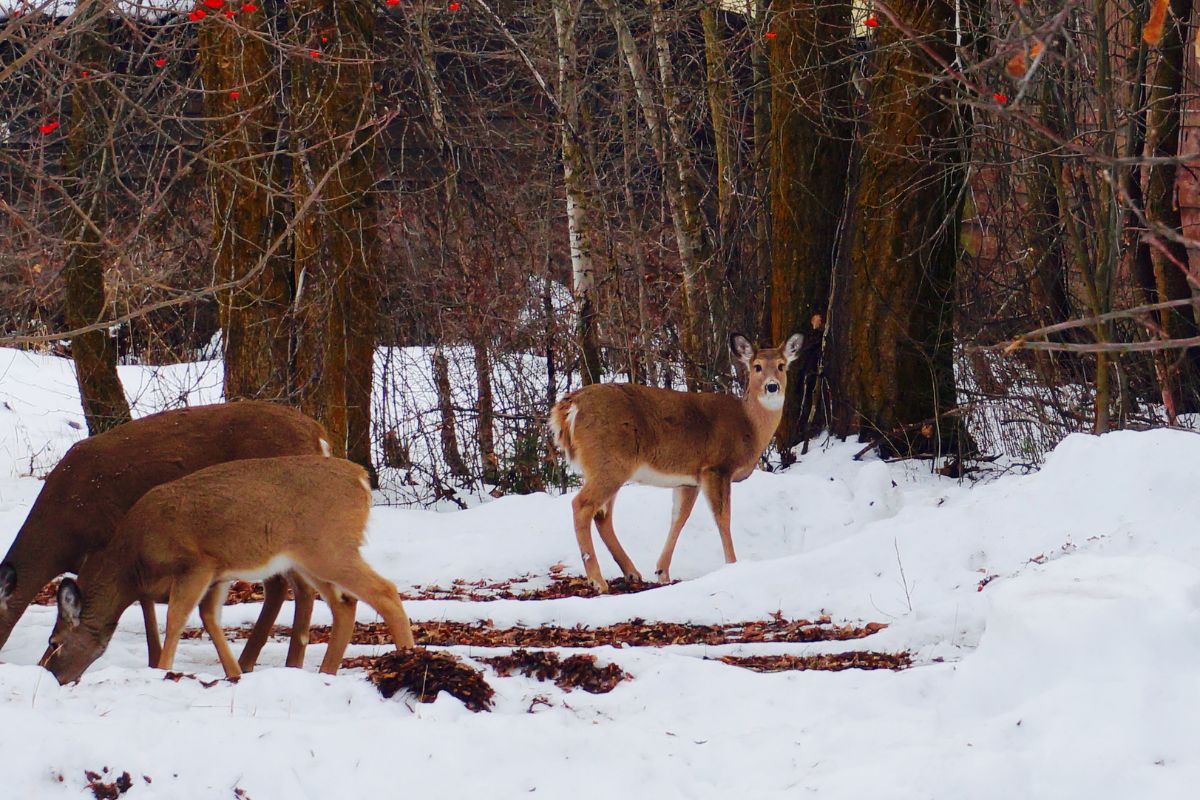
When you think of the Treasure State’s extreme temperatures, it’s only natural to wonder how the local wildlife survives the winter months. Well, you’re in for a treat.
Montana’s wildlife scene during winter is nothing short of captivating. Believe it or not, many species endure the entire winter and have developed strategies to withstand the extremely cold temperatures.
Take bighorn sheep, bison, and moose, for instance. These majestic creatures have evolved to thrive in high-altitude environments, making them masters of Montana’s snowy slopes.
The thick fur coats you wear during winter? Well, it probably got inspiration from these winter-style icons; weasels, foxes, and coyotes. Their thick fur coats not only keep them warm but also provide excellent camouflage against the snowy backdrop.
While it is known that some animals, like bears, hibernate during the colder months, in Big Sky Country, there’s still plenty of wildlife to see. You won’t be short on wildlife encounters with beavers, hawks, owls, elk, deer, and minks still roaming the vast Montana landscape.
Even the hibernating bears can still be seen. Grizzlies and black bears do occasionally wake up from their slumber during winter. This is especially true for expectant mothers, who give birth to cubs before returning to their drowsy state. It’s a rare but heartwarming sight if you’re lucky enough to witness it.
So, when you’re out and about in Montana’s winter wonderland, keep your eyes peeled for these resilient creatures. Just remember to dress warmly with the best clothes for Montana winters; you’re about to embark on a wildlife adventure like no other.
How Cold Does It Get in Montana Final Thoughts
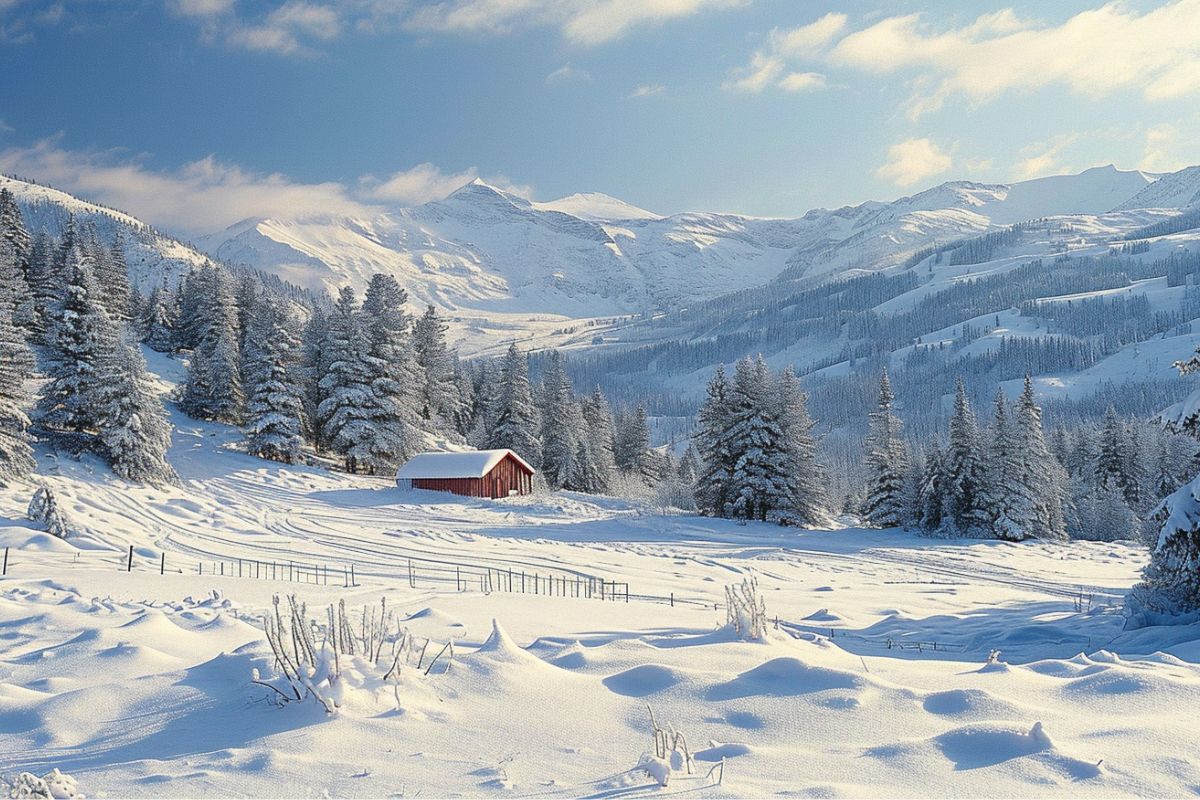
Montana’s winters are not for the faint of heart; they offer a bone-chilling embrace that ranks the state among the coldest in the nation. From its location to the chilling winds, Montana’s climate is a perfect storm for extreme cold.
But it’s not all about the temperatures; Montana’s winter wonderland also beckons with its high snowpack averages and a vibrant wildlife scene. Whether you’re a winter sports enthusiast or a wildlife observer, Montana offers a unique and captivating experience.
So, if you’re planning a winter adventure in Montana, don’t just pack your warmest gear; also bring along a sense of wonder.
The state’s freezing temperatures and abundant snowfall set the stage for a true winter wonderland, where you can witness nature’s resilience and beauty in the face of the cold. Just remember, in Montana, winter is not just a season; it’s an awe-inspiring journey.
How Cold Does It Get in Montana FAQs
1. What Month Gets the Most Snow in Montana?
On average, Montana receives 9.6 inches of snow in December, making it the snowiest month of the year in the state.
2. How Many Months Are Cold in Montana?
Montana’s cold season lasts for 3.4 months, beginning in November and ending in February.
3. What Month Has the Best Weather in Montana?
The ideal times to visit Montana are from July to September when the weather is warm and pleasant, and between December and March when it’s ski season and chilly weather offers a unique experience.
4. Are Summers Cold in Montana?
Montana’s beautiful summer weather is typically warm and dry.
5. What Is the Coldest State in the US?
Alaska is the coldest state in the US, while Montana ranks among the coldest states, with average winter temperatures ranging from -10°F (-23°C) to -50°F (-45.6°C).
To gain further insights regarding Montana, check the articles below:

